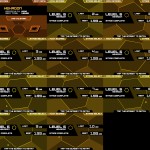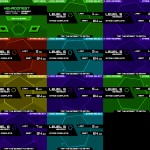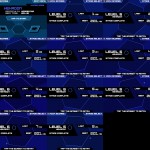I played Super Hexagon in order to lose at certain points in the game. Whenever I first began this project, I attempted to lose the game on only whole numbered times (x:00 seconds). This strategy required me to look at both the game itself and the timer up in the corner, forcing me to focus on two things at once. However, due to the rhythmic nature of the game, I only managed to win on a whole number 6 times out of the hundreds (possibly thousands, who knows) times I played the game.
So, I opted for a slightly different approach. Rather than only losing at specific times, I decided to lose at every “obstacle” that appears in the game to see the different times that the game actually forces you to lose at. I played every level, and attempted to hit the first 10 blocks that appear on screen (I only played if the level didn’t change rhythmic patterns, which added about half an hour extra in time). This time, rather than focusing on the clock, I had to pay attention to the obstacles much more than I usually do while playing the game, and count them at the same time.
What I discovered is that this approach was much more headache inducing than any way I’ve ever played Super Hexagon before. The zen-like focused state that you achieve while playing bullet-hell style games was completely lost, and my vision even ended up getting a bit weird after about 15 minutes. Throbbing headache soon followed.
Along with the obvious mistake of losing count, one of my biggest problems was that I actually kept losing track of the fact that I was trying to lose, and I would end up missing the obstacle that I was trying to hit for that round. And, while you totally lose track of time when you play Super Hexagon the normal way, this hour and a half long experience felt like an eternity.
I’m gonna stick to playing Super Hexagon the usual way.







